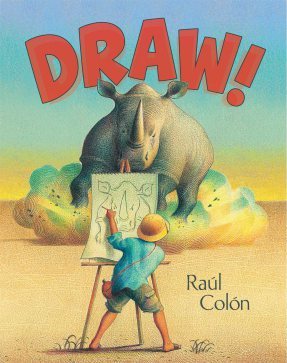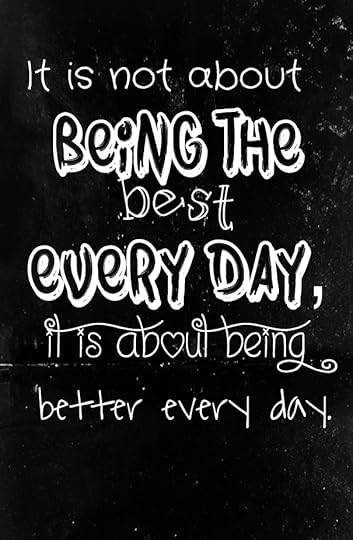Pernille Ripp's Blog, page 67
October 23, 2015
Great Picture Books to Spark Imagination
Whether it is to become less lonely, to find a friend, or to simply create – imagination is a huge theme of many amazing picture books at the moment. Behold some of my new, and not so new, favorites for inspiring students to use their imagination. Beware; these tend to spark great conversations.
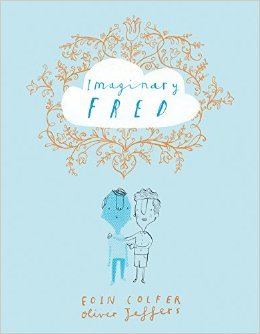
Imaginary Fred by Eoin Colfer and illustrated by Oliver Jeffers packs quite the punch on the theme of friendship, loneliness, and also what the power of finding a friend can be. I love how it also shows what can happen with determination and once we feel we find our place in the world. I love how it is not just the “real” people that can use their imagination to fit in.
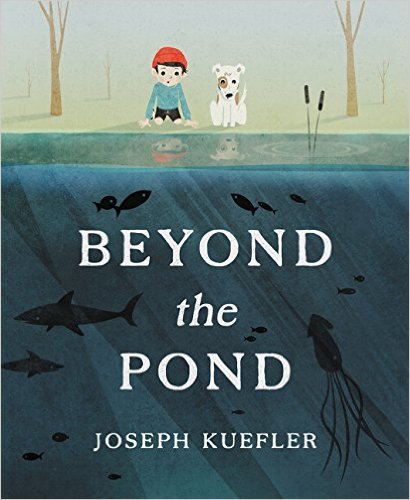
A common theme of many of these picture books is how visually stunning they are. Beyond the Pond by Joseph Kuefler speaks of a boy and what happens when he explores beyond the pond. I love the vastness of the book and the journey he goes on.
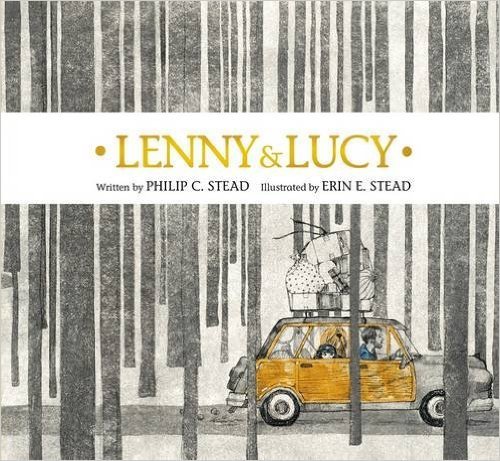
I almost wrote a picture book post on powerful books about loneliness because I wanted to share the beauty of this book Lenny and Lucy written by Philip C. Stead and illustrated by Erin E. Stead somehow. While that post will be written at some point, I also think this picture book fits quite nicely here. Lenny and Lucy is about using your imagination to conquer your problems, and that is a powerful message indeed. On a side note; Erin E. Stead is a contender for the Global Read Aloud 2016 picture book study!
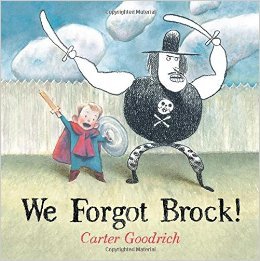
Again the power of an imaginary friend and how having someone no one else can see cam become a problem. I love the book We Forgot Brock by Carter Goodrich because of the friendship it portrays.
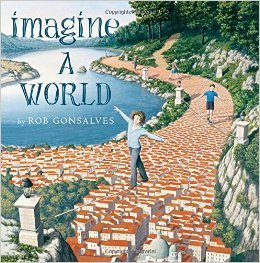
the illustrations in Imagine A World by Rob Gonsalves are astounding. I loved reading this with my own children as well as with my 7th graders because of their reactions. This definitely sparks ideas in students!
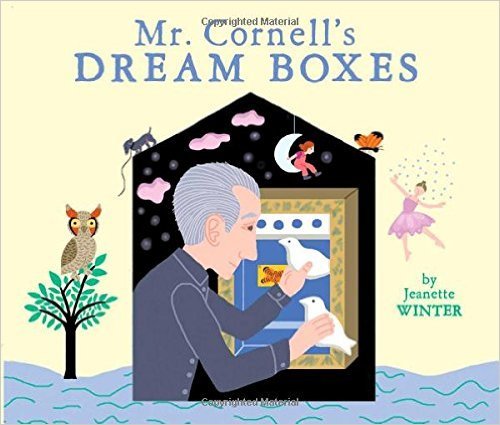
I love Mr. Cornell’s Dream Boxes by Jeanette Winter for how it can inspire children to use their imagination when it comes to making and creating. By taking seemingly simple things and turning them into works of art, Mr. Cornell changed the world of art.
Draw! by Raul Colon is a masterpiece when it comes to explaining how an artist mind works. I love seeing the reaction when students get to the final page and discover what the meaning behind the book is.

Papa’s Mechanical Fish by Candace Fleming and illustrated by Boris Kulikov is a book I turn to for many things; theme, perseverance, conflict, and also imagination, because it si only with imagination that the father of the book solves his problem.
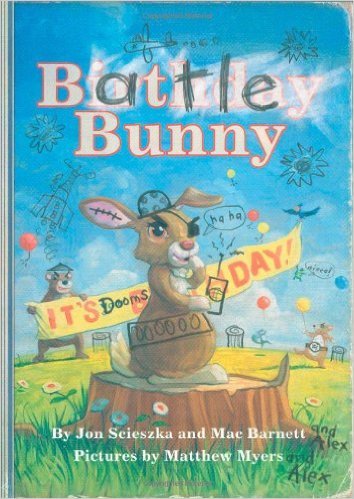
How can your imagination save the most boring story? I love the message of Battle Bunny written by Jon Sciezka and Mac Barnett, illustrated by Matthew Myers. And I also love the students’ reaction when they first start to read it, someone always comes to report that the book has been defaced.
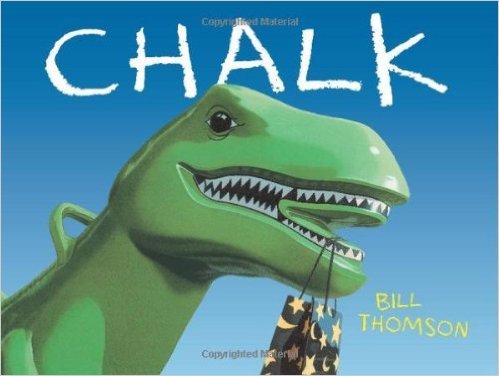
Only their imagination can save the kids in Chalk by Bill Thomson. Another great wordless picture book to add to your collection.
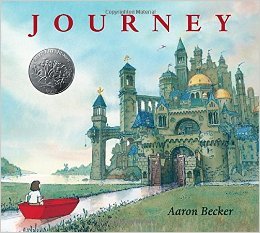
Both Journey and Quest by Aaron Becker speak to the power of a girl’s imagination and the adventure that can unfold. I also love how these books challenge my students’ imagination as they try to decipher what is really going on.
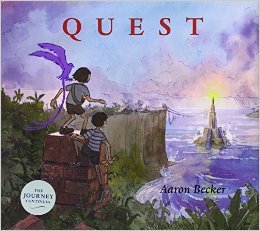
There are a few of our favorite books to spark imagination. Please add those I missed in the comments.
To see the lists of other favorite books and picture books, please see the collection here.
Filed under: books, Literacy, Passion, picture books, students


October 22, 2015
How to Have Courageous Conversations With Your Child’s Teacher
Every year it has happened to me, you check your email or your voicemail not expecting much and there it is; a message from “that” parent that makes you so upset. That message that makes you question everything you have been doing, everything you are trying to do. And you cannot help but get a little angry, but get a little defensive, to immediately want to protect yourself rather than stop and think. It is so hard sometimes being in a world where communication is so easy and words can be interpreted in a million ways. And while those messages may seem hurtful at first, they can become the biggest inspiration for growth, if we let them.
No one sets out to be “that” parent. No one sets out to send an email that can be read a million ways, to make a phone call that you know might dampen someone else’s day. But sometimes we have to start the types of conversations that we hope to never have with our child’s teachers. Sometimes we have to ask things that may be seen as questioning them. And it is so hard. Especially when you are a teacher and you know exactly how something can be taken.
And yet, for the sake of our children we have to find ways to have tough conversations. When something is not working for our child it is our right and responsibility to speak up. But there are ways to do it nicely, to where it will not immediately be taken as an attack but rather as an invitation to further discussion. So what can you do?
Be nice. Politeness goes such along way. If you are about to ask some tough questions, use your manners and do not speak down to someone else. All the teachers I know take great pride in their work and no one sets out to have bad experiences in their classroom, so show respect by the tone of voice you use whether written or spoken.
Investigate by asking questions. If I believed all of the things our daughter, Thea, told me, I would have a crazy view of her school, after all she is 6 and sometimes pretty tired by the time she gets home from school. So when something happens I always ask questions before I jump to any conclusions. Often times what really happened is not what a child shares, so give the teacher the benefit of the doubt.
Do your research. We oftentimes think that teachers have all the power over what happens in their classrooms, but we do not. Anything from district initiatives, state standards, and federal regulations all influence what we do in our classrooms, so make sure the teacher has control over whatever it is you are questioning, particualrly if it something that has upset you.
Ask for clarification. When Thea came home with a reading log 5 days into kindergarten I emailed her teacher asking what the reasoning behind it was without sharing how much I hate reading logs. I needed to make sure her teacher knew I was not questioning her, but rather trying to understand. Once I had more information then I could ask further questions.
Leave room for conversation. When we come across as brash or hotheaded, we are not inviting further conversation. Ask for help. Ask for support and ask to be a partner rather than dictate what someone should do.
Over-explain. I would rather a parent over-explain their reasoning than under-explain. Sometimes when we are too brief, we leave a lot of room for interpretation which almost always ends up being a negative experience for the recipient. So state your point, explain why, and give enough information for the teacher to have something tangible to respond to.
Be specific. If something is harming your child tell me how. If your child has reported something to you tell me what that is. I cannot sort through a situation or even respond to it well if I do not know the details, which can lead to further misunderstanding.
Keep it to your child. If you are concerned for your child, state that, but do not generalize or ask questions about other children. Teachers have to adhere to strict privacy laws and often cannot answer questions about children. If this is a concern for many parents have them as part of the conversation to, do not just say that you speak for them.
Go to the teacher first. Sometimes our gut reaction is to head to the top when we really need to first speak to the teacher. It is common courtesy to give someone a chance to speak before others are involved. That does not mean administration cannot be involved, it just means the teachers should have a chance to respond first.
Call rather than email. Email can be misinterpreted in so many ways, trust me, I have probably misinterpreted intentions at least once a month, but a phone call or meeting is easier to navigate. If someone is truly upset about something, I would much rather they seek me out and schedule a meeting, letting me know what we will be discussing, then sending an email. And also, be mindful of school hours; if a teacher is in the middle of teaching they probably cannot speak to you at that moment.
Treat the teacher like you would want to be treated. I cannot stress this enough; teachers are human and sometimes we mess up. It is not because we tried to, but it does happens. If you treat us the way you would like to be treated in a tough conversation then our conversation will be much more productive. Much can be handled via an honest and lighthearted conversation, even serious topics.
Gently question. There is nothing wrong with questioning a teacher’s practice if you are seeing it harm your child, but do so gently. Teachers spend a lot of time planning for best practices, and thus take pride in their work. That does not mean it is always in the best interest in the child (public behavior charts, I am looking at you) but that can be a pretty hard thing to face.
And finally, a word to all of us teachers. While criticism, even if just perceived, is hard, it is also a chance for us to reflect, grow and become better teachers. Yes, there are times when criticism will be just that and those moments are hard to get through. But in the end, I truly believe that when a parent asks us questions, even if they come of as a rude or disrespectful, within those questions are a seed for reflection, an opportunity to pause and make sure that what we are doing is in the best interest of children. We are all trying to do the very best we can, after all, let’s not lose sight of that.
If you like what you read here, consider reading my book Passionate Learners – How to Engage and Empower Your Students. The 2nd edition and actual book-book (not just e-book!) just came out!
Filed under: advice, aha moment, being a teacher, being me, parents


October 20, 2015
The Books That Flew Off Our Shelves First Quarter
I love watching my new crop of students develop their reading love. While some come to me as voracious readers, others are more hesitant, still searching for that one book that will convince them that maybe reading is not quite as terrible as they thought it was. Whatever the case, there are a few books that have been flying off our shelves since the moment they were book talked. Here they are in no particular order.
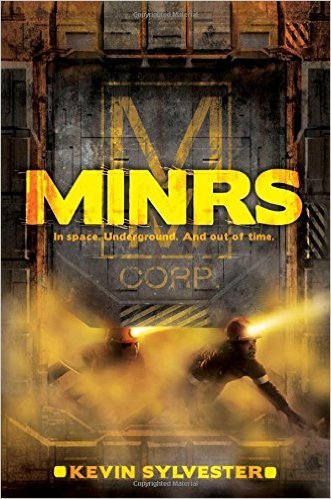
MINrS by Kevin Sylvester has been a hit with a broad group of students. This action packed new series is great for the kids that are eagerly awaiting a new series they can become invested in.

I just introduced The Nest by Kenneth Oppel a week ago and this book is the book all of my students want to read. So much so that I have already gotten another copy of the book. This creepy tale is also a Global Read Aloud contender for 2016.
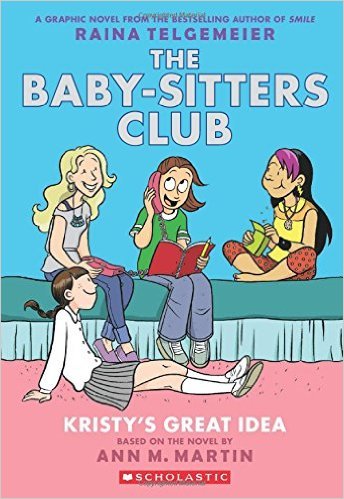
We love Raina Telgemeier, who doesn’t? So with her re-imaging of the Babysitters Club a whole new generation of kids are discovering these classic tales from Ann M. Martin.
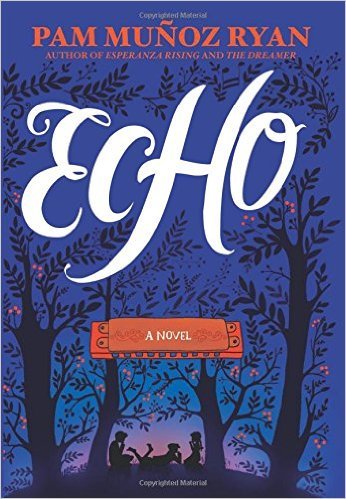
If you have not added Echo by Pam Munoz Ryan to your library yet, your students are missing out. Both copies have been checked out since the first day of school because of the fantastic storytelling in this book.
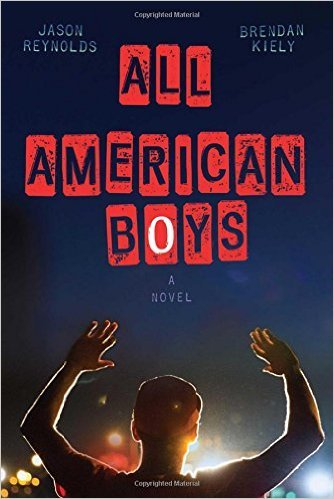
The students all know of my deep admiration for the work of Jason Reynolds by now because I cannot stop talking about this book, All American Boys written by Brendan Kiely and Jason Reynolds. This is also a Global Read Aloud contender.
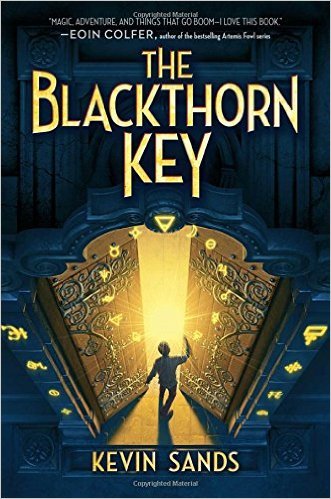
I loved The Blackthorn Key by Kevin Sands and keep gushing about this new must-read series to anyone who will listen.
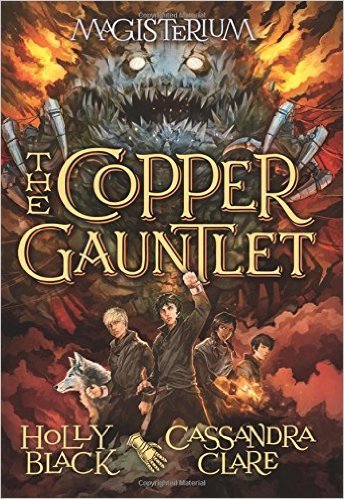
The Iron Trial by Cassandra Clare and Holly Black flew off my shelves, so it is no wonder that the sequel to the book The Copper Gauntlet does as well. The series is such a great add to our library.
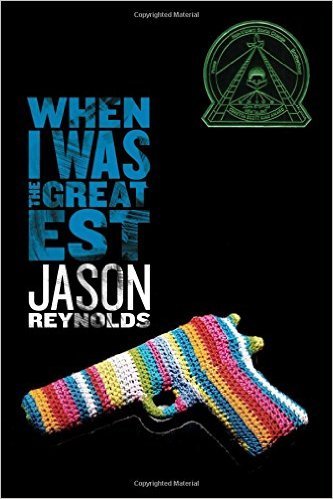
Another favorite in our classroom is another Jason Reynolds book When I Was the Greatest. A powerful tale that seems so deceptively simple but is anything but.
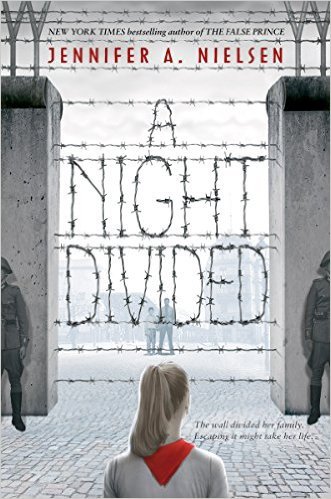
A Night Divided by Jennifer A. Nielsen continues to be a must read.
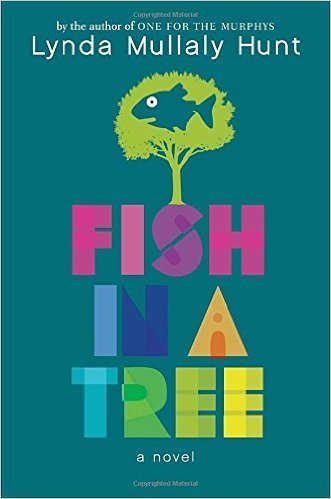
I am not sure I can write this post without mentioning the amazing Fish In A Tree by Lynda Mullaly Hunt. I am using it as our Global Read Aloud book and the students cannot wait for me to read more. Several have also asked to read it on their own.
There are also some “older” staples that continue to fly off our shelves.
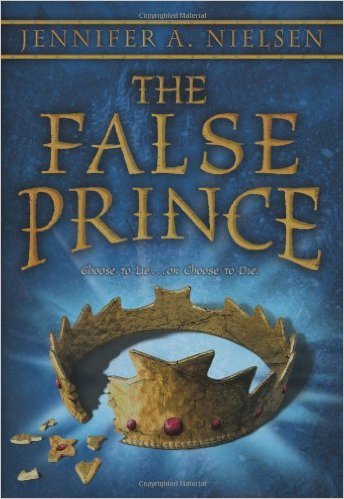
Who can go wrong with getting kids hooked on The False Prince by Jennifer A. Nielsen?
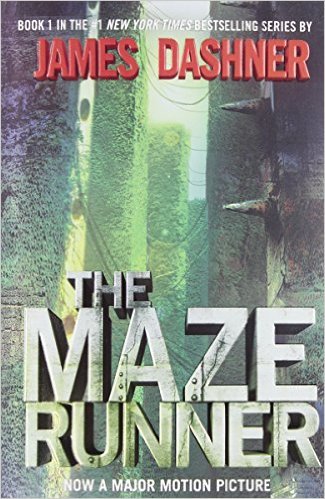
The Maze Runner by James Dashner continues to be one of our top reads.
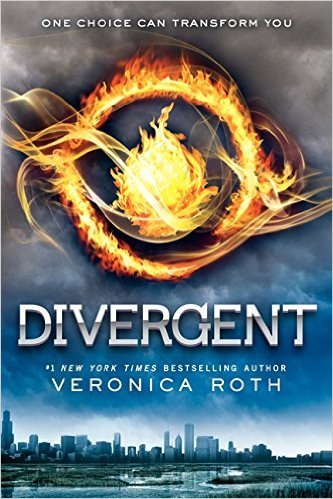
Divergent by Veronica Roth seems to be overtaking The Hunger Games this year.
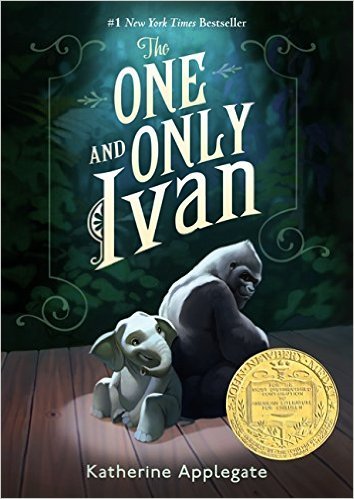
I love that The One and Only Ivan by Katherine Applegate continues to be so well loved, now if I could only find my copy of Crenshaw.
What has been flying off of your shelves?
PS: Stay tuned for a post on our favorite picture books this quarter.
Filed under: books, Literacy, Passion, Reading


October 19, 2015
An Easy Yet Powerful Method for Differentiating Instruction
Today was one of those days that gives you hope. Where you feel like maybe we have been doing something all of these weeks together. That perhaps the students are on their path to personalize, to take ownership of their learning. To do all of those things I get a chance to tell others to try. And it was not because I did anything revolutionary, but instead because I relied on an old method of differentiating, a method that I have not yet perfected, yet it gives us all greater insight every time. This is best used with something the students have already tried.
It is simple; with whatever task you want students to do ask them to divide themselves into three groups; those that would like to work with support of a teacher, those that would like to work with the support of a peer, and those that would like to support a peer. Then let them go into those groups, even if you think it may not be the right choice for someone. Pair students up in the two peer groups and have them do the learning task while you work with the other kids. That’s it for this time.
Here comes the best bit of this; once they have done the task and you have looked at it (I quickly glanced at their work today and assigned them a score according to the criteria we set), then the following day you regroup them based on their scores. Why? Because some kids inevitably need support that they did not get the day before. Some kids are ready to support their peers and do not know it. And others just need one more time with the same type of assignment but in a new way.
So why bother with the self grouping in the first place? Because it gives you invaluable insight to the confidence (and ability) of the students. This way you get a chance to see how they view themselves and it allows you to have some deeper conversations as to their skills. Yes, I had to bite my tongue as a few kids made choices I was not sure of, but it turned out that some of them knew themselves and their needs a lot better than I did.
And there you have it, an easy way to gauge students’ skills, confidence, and needs.
If you like what you read here, consider reading my book Passionate Learners – How to Engage and Empower Your Students. The 2nd edition and actual book-book (not just e-book!) just came out!
Filed under: assessment, being a teacher, Personalized Learning, Student


October 17, 2015
Don’t Go for the Best
No matter how many times I speak somewhere the process is always the same. I barely sleep the night before, my stomach turning, and in the morning I wake up thinking I have nothing to say. No words to share. And that I certainly have no right being the one speaking in front of people.
But then I remember my students. Those students who share their truths with me every day about why they are disengaged. Why school is hard. Why they just want to get school over with. And I find my courage. I find my purpose. I don’t speak for me, I speak for them.
So when you feel a little overwhelmed. A little like you have no right to be doing what you are doing. A little out of your league, remember this; it is not about being the best, it is not about being the only expert or having it all figured it. It is about being better. About making a minuscule change every day that will lead to a better place. About finding your own path and following it, overcoming the obstacles that are bound to be there, including the ones you put in front of yourself. My students taught me that. So for them I will be better today than I was yesterday. For them, I will find my courage. For them I will.
If you like what you read here, consider reading my book Passionate Learners – How to Engage and Empower Your Students. The 2nd edition and actual book-book (not just e-book!) just came out!
Filed under: aha moment, being a teacher, being me, Student


October 15, 2015
How We Can Help Our Book Abandoners
I have watched her every day, picking up a book, reading, kind of, and then at the end of class casually placing it into the return bin of our classroom. Another book abandoned. Another story given up. In the past, I would have grabbed that book and handed it back to her. ” Give it another day or so. This one you’re sticking with.” But not now. Not anymore.
I used to think that when a child abandoned a book, they simple had not given it enough of a chance. That the act of abandonment was a badge of honor; look at how I am not reading! That they abandoned books because it was a way to not read, after all, you cannot read when you do not have a book.
So I helped them by creating rules… You cannot abandon a book until you are 50 pages in. You can only abandon one book, then the next one you have to read. You must tell me when you abandon a book so we can discuss why. The rules were meant to discourage it, to make abandoning a book a hassle, to inspire students to give the book a proper chance. And they kind of followed them, or I thought they did, until I noticed that the students were no longer abandoning books, instead they were fake reading, getting the timing just right of their meticulous page turns, yet their eyes were not on the page. My helpful rules had thus created a bigger problem; children who would rather sit and do nothing but turn a page rather than read a boring book.
Yet, I now know that book abandonment is a sign of a larger problem. That it is not something most students pride themselves on but instead becomes yet another sign that reading is seemingly not for them. That book abandonment becomes proof of their failures as readers. And the students seem to not know what to do about it. So if teaching 7th graders (and 5th graders, and 4th graders) has taught me anything it is that we have to face it head on. So I had to find a new approach, we had to bring book abandonment into the limelight and embrace it for the reading beast it is. Therefore, in our classroom, we…
Share our own abondenments. I celebrate my book abandoning because it tells the students that I am reader who knows herself. That I am tuned in to my own reading needs to find a book that works for me at that moment. And that those needs change depending on what is going on in my life. Students need an abandonment role model so that the stigma can be removed and the conversations can begin. Because that is what we need; more discussion. More reflection. I never tear a book apart, I instead explain why it is not a great fit for me right now, and then offer it up to others. Most of the time someone grabs it and proves me wrong.
Log it. No, not a reading log, I don’t need to know minutes or pages read, but instead a list of books they have finished and books they have abandoned. They have a readers notebook in our classroom that has a section for this so they can easily do it in class. Students need to have a way to examine their own actions, and so the simple sheet with the title on it helps them do just, which leads to the next thing.
Ask why. Assume that all students abandon books, not just the “bad” readers and then ask them why they abandoned that book specifically. Have them examine their own habits so that they can figure out who they are as a reader. My students reflect on their reading habits several times a quarter so that they can see patterns. They look at their list of books they loved and books they didn’t so they can get clues to what they like to read, and then start to pay attention to it. They need to study themselves, and be given the time to do so, so they can learn from this rather than just view it as an inevitable part of their reading habits.
Ask “Now what?” Too often our students expect us to come up with the answer, to hand them the next book. I have learned that while we should support their book browsing, we also need to pull back to let them become “Wild readers” as Donalyn Miller says. Readers who know who they are and what they like. So when a child abandons a book and ask me for another recommendation, I ask them to look at their To-Be-Read list, to think for a moment about what they need right now, what their life looks like, and how much energy they have. They then have to find a stack of books to browse through so they can find their next read. They usually let me know at the end what they pick, not because they have to, but because they want to share their find.
Practice total honesty. I ask my students to be completely honest in their reading habits, whether when we speak or when they reflect, because if they are not I cannot help them. They have to trust me to not punish them or somehow degrade their answers. And I don’t. Total honesty is paramount to how we work in our classroom. And that starts with me; I do not sugarcoat my own habits. If I did not read the night before they know. If I am dragging in a book, they know. And they also know my reading goals because I set them right alongside them.
Ask probing questions. I will ask a child the harder questions, I will ask them if they are just giving up because they are in a pattern of giving up. I will ask them if they think they should try a few more pages or if they have given it careful thought. That does not mean there are rules for when you abandon, but I do want to make sure that the decision to abandon is one that they know should be carefully considered. That yes, sometimes we know after 1 page that we do not want to read a book, and that is perfectly fine, as long as we know why we don’t want to read anymore.
Have an enticing library. Many researchers have solidified the need for incredible classroom libraries, and yes, I know that means that we probably pay for the books out-of-pocket. But it is worth it. Having students be able to immediately try to find another book can be both a blessing and a curse, but in the end, I would rather have a child that is faced with many choices than one who has to wait for a pass or our scheduled time to go to the library to get one.
Creating classrooms where students are passionate about reading, requires many things; a great classroom library, time to read, choice, and also the courage to break some of the rules that surround traditional reading instruction. That includes facing book abandonment head on. What have you tried that has worked?
PS: For ideas on how to get reluctant readers to read, read this.
If you like what you read here, consider reading my book Passionate Learners – How to Engage and Empower Your Students. The 2nd edition and actual book-book (not just e-book!) just came out!
Filed under: assumptions, being a teacher, books, Literacy, student choice, student driven


October 12, 2015
Make It Better
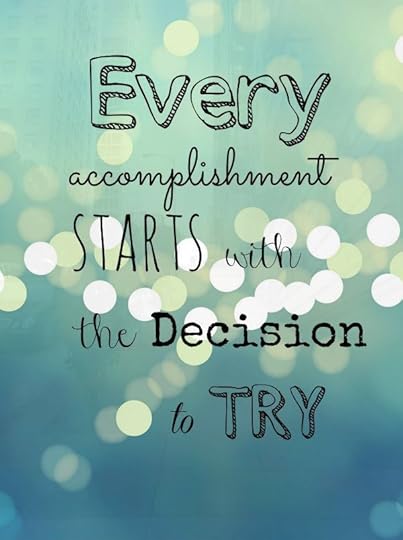 image from icanread
image from icanreadWe are six weeks in and I am supposed to know my students. Six weeks in and I am supposed to be the teacher they need, be able to create lessons that will challenge each one. Six weeks in and soon the quarter will be over and everything I had dreamed about us doing is supposed to have come true. Yet it hasn’t, and I know that the fault lies with me.
I am feeling like a bad day kind of teacher tonight. Like I have somehow failed in my quest to be a great one. Like those things that we have done have not been deep enough, challenging enough, enough enough. And now I have 2 weeks to pick up the pieces and make something out of it.
Yet, as I left today I spoke to a colleague I greatly admire and I told her how I feel like I have been doing everything wrong so far this year, like I have no idea what I am doing in 7th grade. When I told her how I feel like I am failing these kids and that tonight I needed to figure out how to fix what I broke, she told me what I will pass on to you now…
“It is not that it is broken, it doesn’t need to be fixed, it simply needs to be made better.”
And that’s it really. Because it is too easy to give up and say I failed. It is too easy to say that it is over and there is nothing I can do. But that’s not the truth, because every day we have a chance to make it better. Every day we have a chance to make it work. And when we have our bad days, we do not judge ourselves by those, but instead on how we pick ourselves up and do something about it. Because even the greatest teachers don’t know it all. Even the greatest teachers feel like they need to change. And that is part of what makes them great; knowing that there are days when it just wont work.
So when you feel like a bad day kind of teacher, don’t feel like it is all too late. It’s not. Just look at tomorrow and make tomorrow better. And that’s what I plan to do myself.
If you like what you read here, consider reading my book Passionate Learners – How to Engage and Empower Your Students. The 2nd edition and actual book-book (not just e-book!) just came out!
Filed under: aha moment, being a teacher, being me


October 10, 2015
Great Picture Books to Use for Words of the Wiser – Notice & Note
One of the main texts we use to guide our reading instruction is the amazing Notice and Note: Strategies for Close Reading by Kylene Beers and Robert Probst. This book provides us with the foundation for having deeper reading conversations and a common language as we develop our thoughts. While the book has excellent text ideas to use as mentor texts, I thought it would be nice for my students to use picture books on the very first day of a new strategy before we delve into the longer text excerpts. I have therefore looked for picture books I could use with the different strategies and will publish posts as I have them for the 6 different strategies since I cannot be the only one looking for ideas.
The first post was on Contrast & Contradictions, then followed Aha Moments, then Tough Questions, and now Words of the Wiser – a great strategy for noticing when life advice is given. I loved revisiting some older picture books, but also finding some new favorites to share. Again, there are definite repeats here from the other lists, perhaps at the end I will compile a list of picture books that can be used to teach more than one signpost.
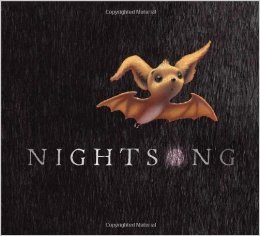
Great wisdom from the mother bat to the baby as he prepares to take off into the night in Ari Berk and Loren Long’s Nightsong.
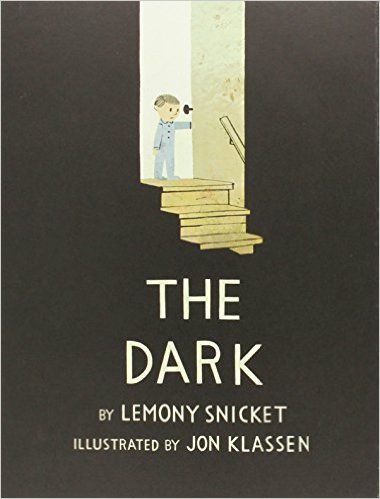
The dark knows just what to say in The Dark by Lemony Snicket.

Who says giraffes can’t dance? Thankfully some wisdom is given in Giraffe’s Can’t Dance by Giles Andrede

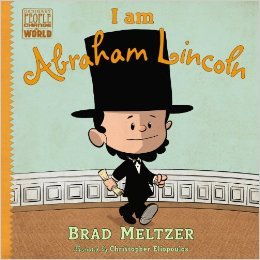

Any of the books in the series Ordinary People Change the World by Brad Melzer can be used for words of the wiser as the characters speak directly to us and give us their wisdom.
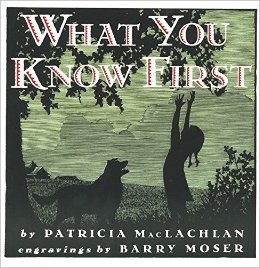
Because what we know first will always help us in our lives, I love What You Know First by Patricia MacLachlan.
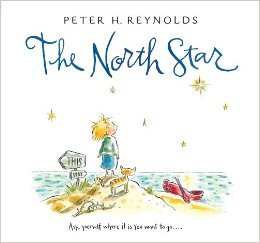
I have had a Peter H. Reynolds book on every list so far, I am pretty sure you can teach all 6 signposts using his books. The North Star will always be one of my favorites.
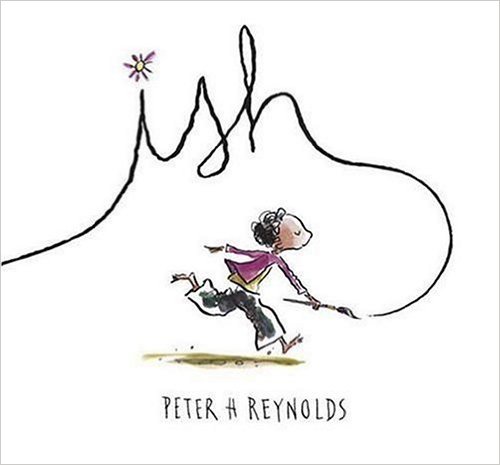
Ish also by Peter H. Reynolds also has great wisdom.

Many of Patricia Polacco’s books can be used for words of the wiser, here I chose Mr. Wayne’s Masterpiece.
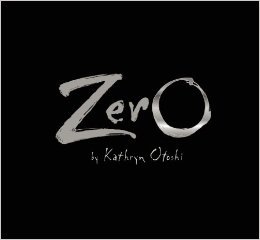
Zero by Kathryn Otoshi is a picture book that can be used for many things, teaching words of the wiser is definitely one of them.
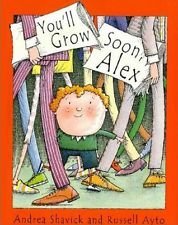
When the students wonder when they will finally get tall, this is a great book to pull out You’ll Grow Soon, Alex by Andrea Shavick and Russell Ayto has great wisdom.
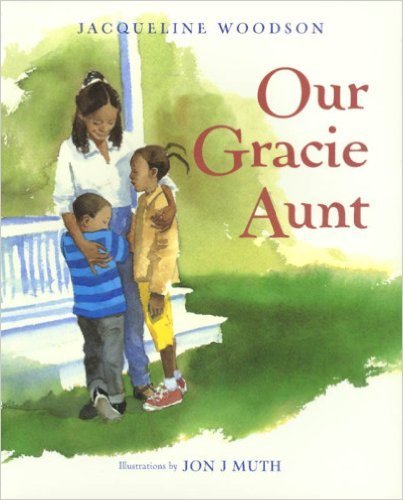
Our Gracie Aunt by Jacqueline Woodson is the book I am using with my students to teach the strategy. It is a beautiful story that will start discussion in our classroom for sure. Each Kindness also by Woodson is another amazing example. In fact, many of her books can be used for this strategy.

I love stories about following your dreams and Dancing in the Wings by Debbie Allen fits the mold.
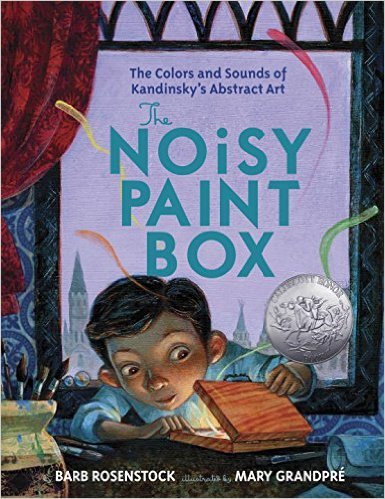
The Noisy Paint Box by Barb Rosenstock is a beautiful reminder to follow your dreams.
I know there are so many more out there, please leave your favorites in the comments.
If you like what you read here, consider reading my book Passionate Learners – How to Engage and Empower Your Students. The 2nd edition and actual book-book (not just e-book!) just came out!
Filed under: being a teacher, books, Literacy, picture books


October 8, 2015
Some Rules We Need to Break In Our Reading Classrooms
We seem to be run by the rules of what came before us. We seem to be trying to uphold traditions that were started all in the spirit of becoming better reading teachers. And yet, I think it is time for us to break some rules, to become reading warriors, and to speak up and say no; this is not what reading will look like in our classroom. This is not the reading experience that my students will have. What are those rules? Well, I am glad you asked.
Rule number 1: You must read X number of pages before you abandon a book.
I used to enforce this; give it 30 pages, give it 50, then I read the False Prince and I told them to keep reading to page 88 where it gets so, so so good. But that is not how adult readers read. I sometimes abandon books after a chapter, after a page, after a paragraph. I listen to the voice inside that tells me that there is just something wrong, that this book is slowing down my reading love and that it is not the right fit at this particular moment. In our classroom, we practice free book abandonment, but we also reflect on why we are giving up on a book. It offers a students a wonderful chance to learn more about their own reading identity.
Rule number 2: You must read a book from every genre.
I used to have students read books from certain genres so that they had been exposed to them all, and yet, most students hated it. So now instead I make sure that our book shopping is varied, that I book talk many genres, and also that they have access to many genres. There is no requirement to read outside of a genre, but only gentle recommendations. We need to celebrate the students that have identified themselves as loving a particular genre, after all we do as adults, rather than force them into thinking that somehow they are not true readers.
Rule number 3: You must fill out a reading log.
My biggest problem (and I have several!) with reading logs is that it inherently shows students that we do no trust them. By asking them to record how much they have read outside of our classrooms, we are telling them that their word is not enough. When we ask parents to sign, our message is even stronger; you may have said this but I only know it is true because your parents agreed to sign this. Is that really what we want to tell our students? And as a parent who has forged her signature on a summer reading challenge, I can tell you, I would do it again if it means that my child does not have to distill her love of reading books into minutes or pages.
Rule number 4: Reading is only something you do with your eyes.
I used to tell students that for a book to count for their book challenge that it had to be read. And reading means they do it with their eyes. Now I know that reading can also be auditory, whether by listening to an audio book or being read aloud to. That students cans till experience a deep connection with a text even if their eyes have not processed it, and that audio books level the playing field for so many of our students who feel like they are bad readers. Reading is many things, let’s make sure that in our rush to define it, we do not alienate the students that need alternative methods the most.
Rule number 5: You must only read books at your level.
Levels were never meant to confine or define a child, but instead meant as a tool for a teacher to select text for guided reading instruction. Yet our obsession with placing children in boxes has made levels prevalent in our schools. If our goal is to create students who identify as readers outside of our classrooms then they need to know themselves as readers. They need to know what they prefer, what they can read, and also what type of book they need at that very moment. That changes, just like it does for us adults. Having students select books based on a level robs them of the chance to figure this out, and in turn, counteracts everything we are trying to teach them.
Rule number 6: You are too old to read this book.
If I only read books that fit my age then I would never read a YA or children’s book again, and that goes for our students as well. Reading books that may be too young is a way for students to relax, to build confidence, and to read a book they feel like reading. How often does our helpful rules really just hinder a child from reading?
Rule number 7: You must create some thing after you finish a book.
When I finish a book, I often hand it to a friend. Sometimes I book talk it to my class, sometimes I write a review, other times I quietly place it in a bin. I do not write a journal entry, I do not create a book report, nor do I make something to show off the theme. When students finish a book they should have an opportunity to discuss the book, to recommend it to a classmate, to share their love of it with the world, if they want. They should not have to choose from a long list of projects to prove that they, indeed, did read it.
Rule number 8: Picture books are for little kids.
Every day, almost, we read a picture book in our classroom. In fact, picture books are serious business here, as I use them to teach students how to infer, how to closely read, how to think deeply about a text and then be able to discuss it with others. We use them as mentor texts as we work on our writing craft. We use them as we build our community. And yes, we use them because picture books make the world a better place and they remind students that reading is meant to be fun and magical. A student told me the other day, “Mrs. Ripp, I am not so sure picture books are for little kids anymore…” And I knew exactly what he meant, because a text that rich should not just be reserved for young kids.
Rule number 9: Graphic novels are not real books.
Graphic novels can be just as complex as the hardest chapter books. In our classroom, graphic novels can be a lifeline; a way to reach the kid that swears they will never love reading, a way to reach a child that cannot get through a chapter book. I have students using graphic novels to find the signposts from Notice and Note at the moment. I have students finally connecting on a deep level with a book that happens to be a graphic novel. I am so thankful to all of the authors out there creating these magnificent books that prove once again to my students that great books do not just look like one thing.
Rule number 10: You must reward reading.
Reading is it’s own reward to quote the fantastic Teri Lesesne. The minute you attach a reward to reading you have diminished the act of reading itself. Think hard about the stickers, the prizes, the special events based on pages read and instead find a way to celebrate the very act of reading by getting more books, by finding more time to read.
Rule number 11: You must not judge a book by its cover.
I do it all the time. We all do. What we need to teach kids though is that covers are not the only way we should judge a book. That even if a book has a terrible cover, which some amazing books truly do, that they then should move on to checking it in other ways; by reading the back, by skimming a few pages, by asking a friend. For students to see us as reading role models we must not hide the true habits we have but instead celebrate them and share what we do. Students do not need to see how we pretend that adults pick books, instead they should see how we really pick books, and that includes judging a book by its cover.
I could have gone on, but these are the rules that stood out to me. I shudder at how many of these I have had in my own classroom and am grateful to the people that have shown me a better way. We can create classrooms where students fall in love with reading, the choice is ours.
If you like what you read here, consider reading my book Passionate Learners – How to Engage and Empower Your Students. The 2nd edition and actual book-book (not just e-book!) just came out!
Filed under: being a teacher, Literacy


October 7, 2015
Who It’s Really For
I could say that I am an amazing teacher. That what I do is not something others could do. That the way I connect with kids is a special talent that only I have developed, and that if you buy my book you could perhaps learn how to teach just like me, that some of my amazing “me-ness” will surely go your way. I could say that I have discovered the one way to be great and all you have to do is try to be more like me.
But I would be lying. (And making a fool out of myself in the process).
Because there are days when I am not so great. There are children that I do not connect with. There are moments when no matter what I try it all falls apart and one of my teammates steps in and saves the day. Saves the lesson. Saves the student. I am a better teacher because of those I teach with. I am a better teacher because of the students that teach me.
You see, being a teacher is not about us. It is not about the great things that we can do. It is not about all of the things that we will teach. It is not about what will work best for us, nor how we will change the world. It is about the kids.
It is about what they will do. What they will learn. How they will change our world. How I get to be a part of the process but I am only as great as my students.
And we seem to forget that at times. We seem to forget it when we share the stories that do not highlight what our students are doing, but instead what we have done. When we advocate not what is best for children, but what is best for ourselves and hope that children may benefit as well. When we teach the way we would like to learn, and forget to ask the students what they need.
It is a balance and it is hard to keep at times. I know I am guilty like so many others. Yet, in this public way, I renew my promise to keep it about the kids. To keep it about what they need, what they want, and what they dream for.
I am not the greatest teacher, I have so much to learn, and I cannot forget that. We must remember what we are doing all of this for, because it is not for us, it is for them. And that is how it should always be. May we never forget that. May I never forget that.
If you like what you read here, consider reading my book Passionate Learners – How to Engage and Empower Your Students. The 2nd edition and actual book-book (not just e-book!) just came out!
Filed under: advice, aha moment, being a teacher, being me, Passion, students



